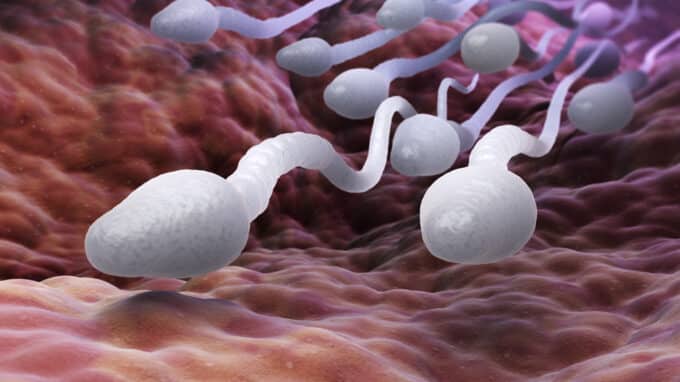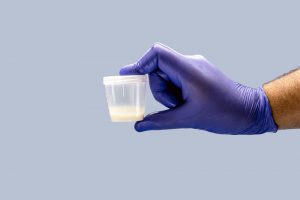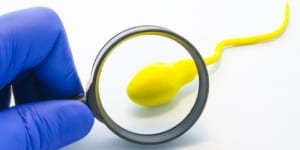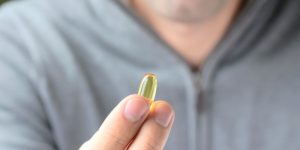Millions of couples worldwide are affected by infertility, with half of these cases being attributable to the man. In 10% of infertile men, few or no sperm are produced. New research from the Stowers Institute for Medical Research, in collaboration with the Wellcome Centre for Cell Biology at the University of Edinburgh, sheds light on what goes wrong with sperm production and leads to potential theories about possible treatments.
Defects in Meiosis Lead to Male Infertility
The study by Hawley Lab and Wellcome Centre researcher Owen Davies, Ph.D., published in Science Advances, may explain why some men do not produce enough sperm to fertilize an egg. In most sexually reproducing species, including humans, a critical protein structure resembling a lattice-like bridge must be properly assembled to produce sperm and eggs. The team, led by former postdoctoral fellow Katherine Billmyre, Ph.D., discovered that in mice, altering a single and very specific point in this bridge caused it to break down, resulting in infertility, providing insight into human infertility in males due to similar problems with meiosis.
Meiosis, the process of cell division in which sperm and egg cells are formed, involves several steps. One of these is the formation of a large protein structure known as the synaptonemal complex. Like a bridge, the complex holds the chromosome pairs in place and enables the necessary genetic exchange, which is essential for the correct separation of the chromosomes in sperm and egg cells. Defects in meiosis are a major cause of infertility. In order to understand how chromosomes separate correctly into reproductive cells, researchers are very interested in what happens immediately before this, when the synaptonemal complex forms between them. Previous studies have examined numerous proteins that form the synaptonemal complex, how they interact with each other, and have identified various mutations associated with male infertility. The protein that the researchers examined in this study forms the lattices of the proverbial bridge, which has a section found in humans, mice and most other vertebrates, suggesting that it is crucial for assembly. By modeling different mutations in a potentially crucial region of the human protein, the team was able to predict which of these mutations might disrupt the protein’s function.
The authors used a precise gene-editing technique to create mutations in a key protein of the synaptonemal complex in mice, allowing the researchers to test the function of key regions of the protein in living animals for the first time. Only one mutation predicted from the modeling experiments proved to be the cause of infertility in the mice. Mice have long been used as models for human diseases. From the modeling experiments with human protein sequences and the high degree of conservation of this protein structure across species, it appears that the molecule that caused infertility in mice probably works the same way in humans.
Method to Find Intact Sperm
In a study, researchers led by Andrei Drabovich, assistant professor of laboratory medicine and pathology at the University of Alberta and corresponding author of the Molecular & Cellular Proteomics study, have developed a diagnostic test to identify functional sperm in infertile men that could change the treatment of male infertility and assisted reproductive technology.
The most common cause of severe male infertility is non-obstructive azoospermia (NOA), which results in no sperm in the ejaculate due to poor sperm or spermatozoa development. Although assisted reproductive technology has improved exponentially over the last 50 years, sperm extraction in men with NOA can take up to 10 hours and success rates vary. Therefore, the researchers wanted to develop a non-invasive method to diagnose NOA and find out if these men have intact sperm that could fertilize an egg. Tests that show the presence or absence of intact sperm in semen can give a good indication of the total number of sperm in the patient.
Drabovich used mass spectrometry to examine the sperm of men with normal fertility and infertile men with biopsy-confirmed obstructive azoospermia or NOA. After analysis, his team identified two proteins, AKAP4 and ASPX, that are found in intact sperm from men with NOA. Using a method called imaging flow cytometry, they showed that ASPX is found in the head of the sperm, while AKAPA4 is found in the tail. In imaging flow cytometry, a device takes pictures of individual cells. After running these samples through, computer algorithms help researchers analyze the millions of images of cell debris and underdeveloped sperm to identify some intact sperm. Since the role of AKAP4 and ASPX is not yet fully understood, Drabovich plans to investigate how they contribute to sperm function. His work could lead to the development of male contraceptives in the future.






